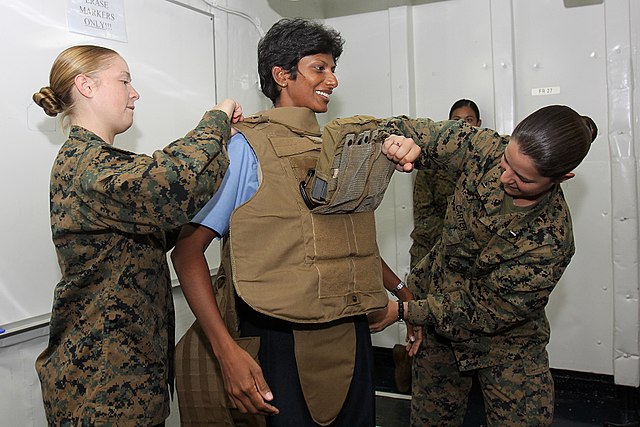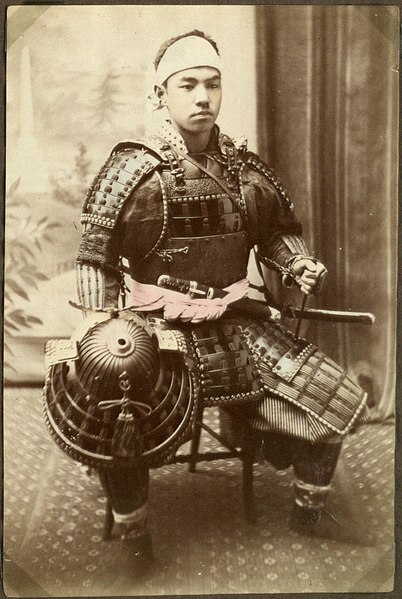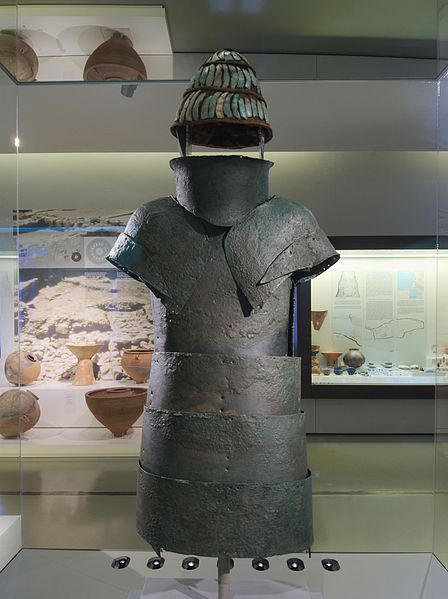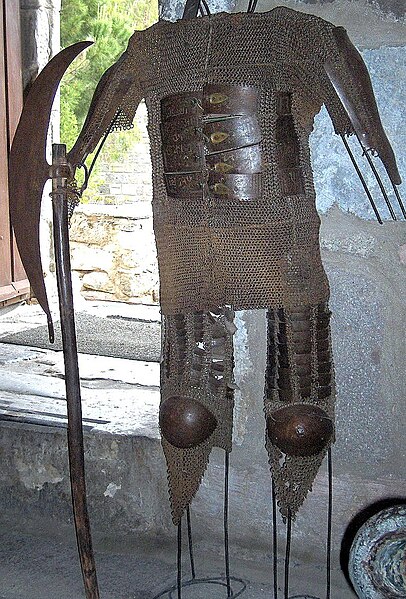Plate armour is a historical type of personal body armour made from bronze, iron, or steel plates, culminating in the iconic suit of armour entirely encasing the wearer. Full plate steel armour developed in Europe during the Late Middle Ages, especially in the context of the Hundred Years' War, from the coat of plates worn over mail suits during the 14th century.
Full plate armour for man and horse commissioned by Sigismund II Augustus, Livrustkammaren in Stockholm Sweden (1550s).
Bronze muscle cuirass, Italy, c. 350–300 BC
A Japanese 16th–17th century suit of plate armour with a western-style cuirass (nanban dō gusoku)
Italian suit of armour with sallet, c. 1450
Body armor, personal armor, armored suit (armoured) or coat of armor, among others, is protective clothing designed to absorb or deflect physical attacks. Historically used to protect military personnel, today it is also used by various types of police, private security guards, or bodyguards, and occasionally ordinary citizens. Today there are two main types: regular non-plated body armor for moderate to substantial protection, and hard-plate reinforced body armor for maximum protection, such as used by combatants.
United States Marines in July 2010 assist a Sri Lanka Navy sailor in trying on a Modular Tactical Vest
Japanese warrior in armor
Greek Mycenaean armor, c. 1400 BC
Turkish plated mail








